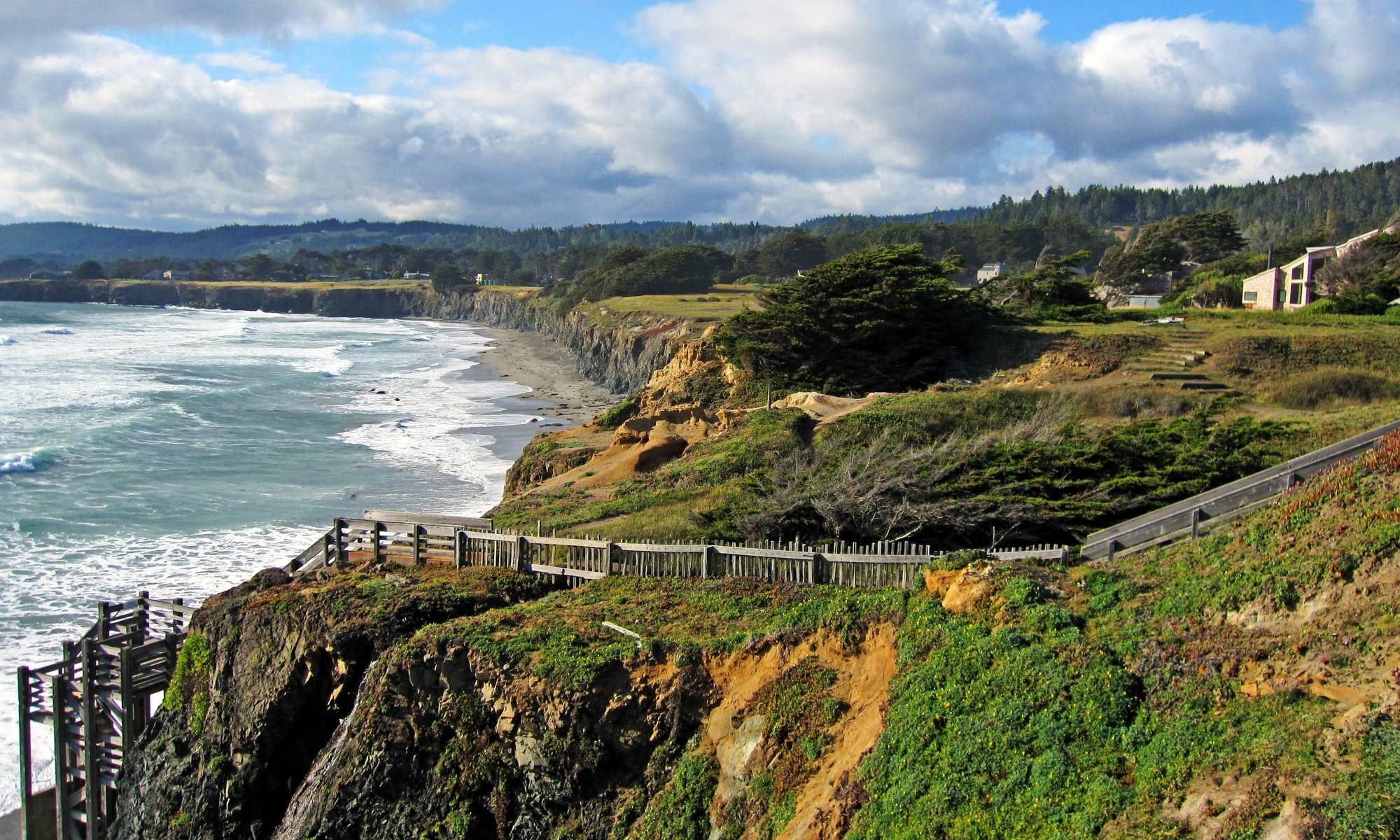The Sea Ranch History
The Celebration of Life, Pomo Indian style.
Pomo life epitomized the philosophy, “Don’t do anything you don’t want to do.” Pomos loved singing and dancing, games and gambling. They played ball and swam, and enjoyed daily saunas. The temperate environment made few demands. Simple grass skirts and animal skins were enough clothing in winter. Pomo houses were simple cone-like affairs of sticks and bark – when a house became dirty they burned it down.
The sea provided a rich harvest of salmon, crab, abalone, clams and mussels. Berries, nuts and acorns were plentiful on land.
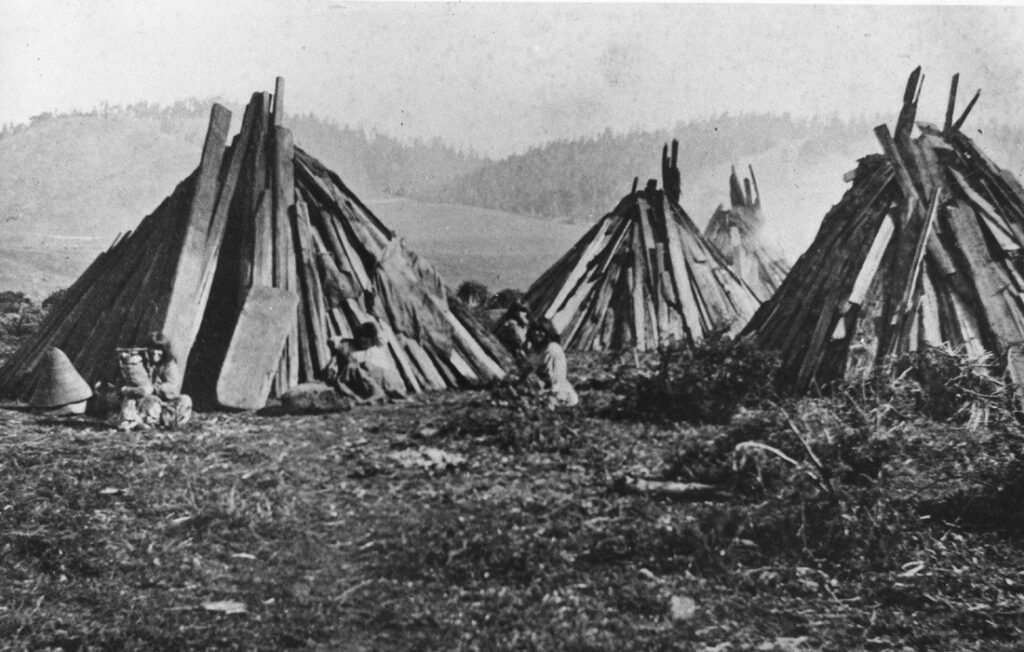
Tribal wars were rare. The rough seas and rugged terrain of the North Sonoma coast provided splendid isolation. And the treacherous, often fog-shrouded coastline provided an important barrier – it fended off the ships of the white man until 1812.
Furs, timber and gold. The growing pressures of the western frontier.
In the spring of 1812 Ivan Kuskov and 120 Russians and Aleut Indians established Fort Ross. In stark contrast to the Pomos they tilled the soil, planted orchards, raise livestock, felled redwoods and harvested up to 40,000 sea otter a year.
By 1839 the sea otter were nearly gone. The Russians moved on, but California’s north coast would never be the same again.
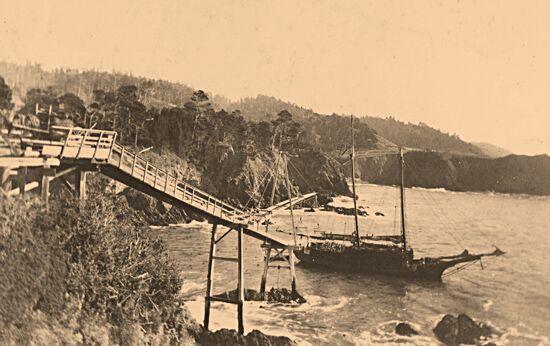
In the late 1840’s immigrants flocked to The Sea Ranch area. Bihler’s Landing was set up at Black Point (near the present site of The Sea Ranch Lodge). They were just in time for the gold rush – and the rush for timber, beef, and hides that followed.
| Black Point Sawmill |
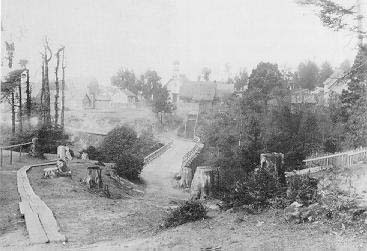
Black Point Sawmill
By 1870 the sawmill at Black Point was producing 8 million board feet of lumber a year. An even larger mill operated at the mouth of the Gualala. Soon railroads were built along the Gualala, at Del Mar landing and Black Point. Small towns developed at Stewart’s Point, Black Point, Del Mar Landing and Gualala. Salt Point to the south had over 1,000 inhabitants. The region was growing by leaps and bounds. It was an age of relative prosperity.

The Land is restored as The Sea Ranch
In 1963 the land was purchased by Oceanic California, a subsidiary of Castle & Cooke, Inc. Their first order of business was a massive study of native plants, animals, soils and weather, followed by a carefully wrought plan to develop portions of the land for housing and recreation, while returning the bulk of the land, step by careful step, to an earlier, more natural condition.
Removal of logging slash and debris in the forests was followed by planting of thousands of trees in overgrazed and logged areas. Native grasses and wild flowers were reseeded, providing refuge for wildlife and reversing the effects of erosion.

Between 1964 and 1972 a lodge and restaurant were built, along with a small business center with an airport and fire station, and several hundred homes. The Sea Ranch was beginning to receive national acclaim as a model of environment-sensitive development.
Then, in 1972 California voters passed proposition 20, setting in motion the Coastal Zone Conservation Act. For the next 9 years The Sea Ranch became a focal point for the issue of private property rights versus the public need for coastal access and open space.
After nearly continuous negotiation and much litigation the California Legislature passed a bill enabling settlement of the dispute. Implementation of the legislation was approved by the California Coastal Conservancy and The Sea Ranch Association. On July 24, 1981 the settlement became effective, allowing orderly development at The Sea Ranch to continue.
Today the ancient ways are returning. Life in harmony with the land.
While legislators, the developer, Sea Ranch owners, and conservation and recreation advocates argued their cases, the careful restoration of The Sea Ranch lands by The Sea Ranch Association has continued. Social life has thrived too. There are active theatre and music groups, potlucks, a community garden, and art, photography and nature study groups.
Other changes occurring north and south of The Sea Ranch are serving to further enhance the area. Local retail and professional services have grown: it’s as easy to fill a tooth as a shopping bag. Automotive services, laundry and dry cleaning, pharmacy, medical, dental, real estate and legal services, hardware and building supplies, sporting goods, lodging, groceries, banks, restaurants and fast food. All Are close at hand.
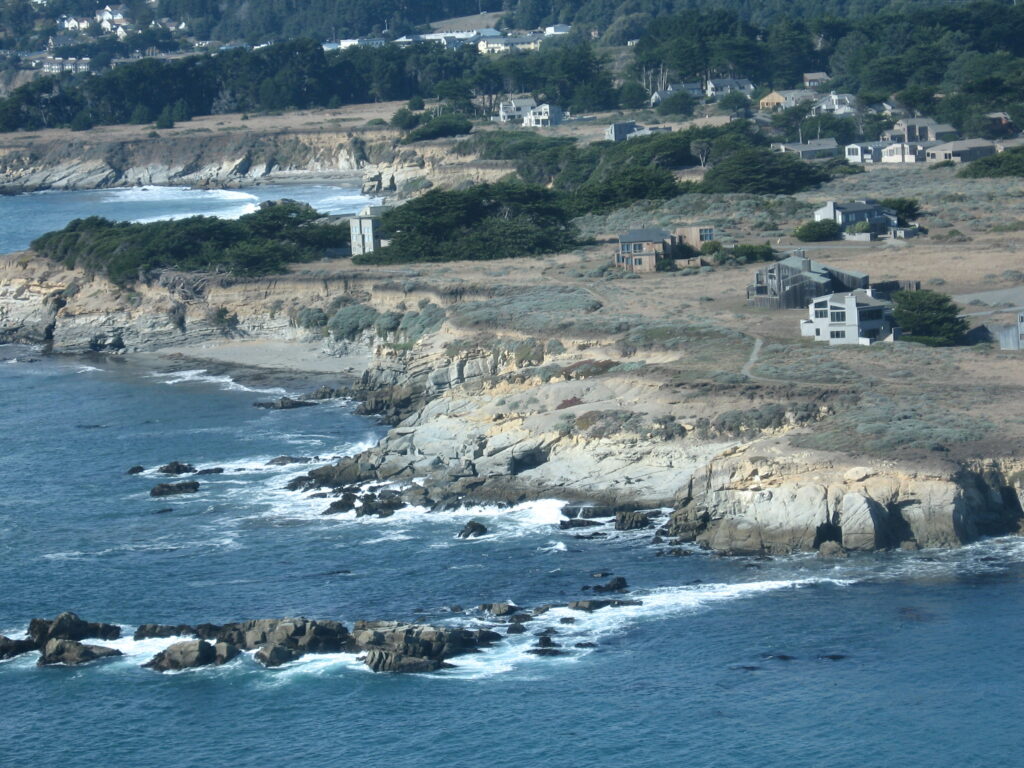
The newest homesites in the north part of The Sea Ranch are conveniently close to the services and activities of Gualala. Nearly all of these homesites also enjoy ocean views, and are within an easy walk to The Sea Ranch Golf Course.
But the most important reason to be a Sea Ranch owner will always remain The Sea Ranch itself: A spectacular stretch of coastal land. Unobtrusive development. And the natural flora, fauna and open space – preserved for the enjoyment of all who live here.
